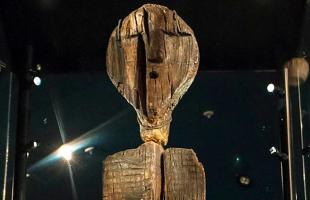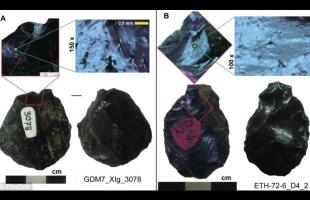Copy Link
Add to Bookmark
Report
Computer Undergroud Digest Vol. 09 Issue 34

Computer underground Digest Sun May 4, 1997 Volume 9 : Issue 34
ISSN 1004-042X
Editor: Jim Thomas (cudigest@sun.soci.niu.edu)
News Editor: Gordon Meyer (gmeyer@sun.soci.niu.edu)
Archivist: Brendan Kehoe
Shadow Master: Stanton McCandlish
Shadow-Archivists: Dan Carosone / Paul Southworth
Ralph Sims / Jyrki Kuoppala
Ian Dickinson
Field Agent Extraordinaire: David Smith
Cu Digest Homepage: http://www.soci.niu.edu/~cudigest
CONTENTS, #9.34 (Sun, May 4, 1997)
File 1--Legal Bytes 5. - CyberLaw Info
File 2--Cu Digest Header Info (unchanged since 13 Dec, 1996)
CuD ADMINISTRATIVE, EDITORIAL, AND SUBSCRIPTION INFORMATION APPEARS IN
THE CONCLUDING FILE AT THE END OF EACH ISSUE.
---------------------------------------------------------------------
Date: Wed, 9 Apr 1997 10:07:58 -0500 (CDT)
From: pkennedy <pkennedy@IO.COM>
Subject: File 1--Legal Bytes 5. - CyberLaw Info
(MODERATORS' NOTE: We originally intended to distribute Legal
Bytes over several issues, but that would disrupt the articles'
continuity. Readers might also enjoy seeing what the full issue
looks like. It's worth subbing to--another great Net resource!!))
**********************************************
** LEGAL BYTES **
**********************************************
Spring 1997, Volume 5, Number 1
George, Donaldson & Ford, L.L.P.
Attorneys at Law
114 West 7th Street, Suite 1100
Austin, Texas 78701
(512) 495-1400
(512) 499-0094 (Fax)
gdf@gdf.com
http://www.gdf.com
----------
Copyright 1997, George, Donaldson & Ford, L.L.P.
(These articles may be re-distributed electronically,
without editing and with proper attribution)
----------
David H. Donaldson, Jr., Publisher, dhdonald@gdf.com
Peter D. Kennedy, Editor, pkennedy@gdf.com
----------
IN THIS ISSUE:
1. THE SUPREME COURT AND CYBERSPACE --
THE PENDING COMMUNICATIONS DECENCY ACT CHALLENGES.
2. OPEN GOVERNMENT AND ELECTRONIC COMMUNICATIONS:
IS E-MAIL A PUBLIC RECORD ... AND OTHER QUESTIONS.
3. NBA LOSES FIGHT TO CONTROL "REAL-TIME" SPORTS INFORMATION.
_________________________________________________________________
1. THE SUPREME COURT AND CYBERSPACE --
THE PENDING COMMUNICATIONS DECENCY ACT CHALLENGES
(This article was first published in Communications Lawyer,
Vol.14, No.3 (Fall 1996)).
This year's term will see the Supreme Court's maiden voyage
into cyberspace. On March 19, 1997, the Court heard oral argument
in a case dealing with Congress' own first stumbling steps to
regulate speech on the Internet. Fresh from its trip through the
wilds of regulating indecency on cable television, in the Denver
Area Consortium case, 116 S.Ct. 2374 (1996), the members of the
Court must now define constitutional boundaries in a decentralized,
anarchic, expanding and ever-changing communications technology
that no Founding Father could have envisioned. How will the
Justices fare?
The Communications Decency Act of 1996.
Spurred by torrid and exaggerated reports of pervasive on-line
pornography, Congress drafted, and then grafted onto the
Telecommunications Act of 1996, the "Communications Decency Act"
(CDA). A candidly content-based regulation of speech, the CDA
prohibits transmitting obscenity and child pornography via computer
communications -- something already illegal under federal and most
state laws. The CDA ventures further, however, by prohibiting the
transmission of "patently offensive" and "indecent" material over
computer networks. Modeled after the "dial-a-porn" laws, the CDA
sanctions violators with fines and up to two years in prison, but
provides several "safe harbor" affirmative defenses to prosecution,
discussed below.
No one -- not even its defenders -- claims the CDA was
elegantly or even consistently drafted. Its provisions regarding
obscene material have so far gone unchallenged; the disputes have
centered on its regulation of indecency. Two provisions are at
stake. The first is section 223(a), which prohibits using, or
knowingly permitting the use of, a telecommunications device to
knowingly make, create, or solicit any "comment, request,
suggestion, proposal, image or other communication which is obscene
or indecent, knowing that the recipient of the communication is
under 18 years of age." 47 U.S.C. s 223(a)(1)(B) & (2). The CDA
supplies no definition of "indecent." The second is section
223(d), which does not use the term "indecent," but prohibits
using, or knowingly permitting the use of,
an interactive computer service to display in a manner
available to a person under 18 years of age, any comment,
request, suggestion, proposal, image or other communication
that in context, depicts, or describes, in terms patently
offensive as measured by contemporary community standards,
sexual or excretory activities or organs.
47 U.S.C. s 223(d).
As anyone who has spent time online knows, Internet
communications do not easily lend themselves to confirmation of the
participants' ages. World Wide Web home pages and Usenet
newsgroups, for example, are generally available to anyone online;
they neither target communications to subscribers, nor admit to
easy methods of filtering out minors. On the other hand, unlike
broadcast communications, most Internet communications are not
pervasive. A user must take affirmative steps to receive or view
information (unlike simply turning a radio or television dial),
thus reducing the risk of inadvertent exposure to material that
might offend. And most significantly, unlike other mass media,
online publishing is not concentrated; it is radically
decentralized, where everyone on the Internet is both audience and
publisher -- to millions. Content-based regulations that impose
liability depending on whether material is made "in a manner
available" to seventeen-year-olds just do not sit well with the
Internet's structure, nor with most of its denizens.
The Legal Challenges.
The Internet culture -- libertarian by nature -- reacted to
the CDA's passage in predictable fashion. Usenet blistered with
attacks on Congress and the President, and thousands of World Wide
Web sites turned their backgrounds black and added blue ribbons in
protest. The American Civil Liberties Union, initially slow to
appreciate the Internet, teamed up with the on-line civil liberties
pioneer, the Electronic Frontier Foundation, and sued to enjoin the
CDA in Philadelphia federal court on February 8, 1996, the very day
President Clinton signed the bill into law. Eighteen other
plaintiffs joined the ACLU and EFF in the case, entitled ACLU v.
Reno. On February 15, District Judge Ronald L. Buckwalter issued
a temporary injunction restraining enforcement of the indecency
provision of the Act.[fn.1] Shortly thereafter, the American
Library Association and twenty-five others filed suit in the same
court, and their case was consolidated with ACLU v. Reno.[fn.2] On
the same date that ACLU v. Reno was filed, Joe Shea, the editor and
publisher of an electronic daily newspaper, filed a separate suit
in the Southern District of New York (Shea v. Reno).[fn.3]
Conservative groups such as Morality in Media lined up with the
Justice Department, and during the Spring of 1996 the Philadelphia
and New York federal courthouses rang with testimony about Web
surfing and crawling, Internet search engines and indexes,
cybersmut, anonymous remailers and blocking software with names
like "NetNanny" and "SurfWatch."
Under special provisions for expedited review included in the
Act, three-judge District Court panels were convened to hear the
ACLU and Shea cases. In Philadelphia, Judge Buckwalter, joined by
Third Circuit Chief Judge Dolores K. Sloviter and District Judge
Stewart Dalzell, heard evidence over a number of days on the ACLU's
request for a temporary injunction, and ruled on June 11. The
court's ruling consisted of joint findings of fact and three
separate opinions, each finding both challenged sections of the CDA
unconstitutional. All three judges concluded that the CDA
effectively prohibited constitutionally-protected speech among
adults, and was not narrowly tailored to justify the government's
interest in protecting minors from indecent speech. Judges
Buckwalter and Sloviter additionally concluded that the CDA's use
of "indecent" and "patently offensive" was inherently vague and
unconstitutional as well.
The New York District Court followed suit on July 29, in a
single opinion written by Second Circuit Judge Jose Cabranes,
joined by District Judges Leonard Sand and Denise Cote. [fn.4]
While the New York court did not conclude that the CDA was
unconstitutionally vague, it agreed that the law's restrictions on
indecent speech were overly broad, and were not saved by the
government's attempt to limit the CDA's reach or by its safe harbor
defenses. The Internet rang with celebration; the CDA's proponents
declared that the Supreme Court would have the final word, and
indeed it will.
The Key Questions Facing the Supreme Court.
The Supreme Court was almost certain to hear the government's
appeal, as section 561(a) of the CDA specifically provides for
expedited review "as a matter of right by direct appeal to the
Supreme Court." These are the key questions it will likely face.
1. Is the CDA Void for Vagueness?
Judge Buckwalter, with Judge Sloviter joining, concluded that
the CDA's definition of the speech at issue was too vague to
enforce, particularly with criminal sanctions. Judge Buckwalter
was skeptical of the government's claim that section 223(a)'s
"patently offensive" language meant the same thing as section
223(d)'s undefined use of "indecent," but even assuming they did,
he concluded that this still left the regulated speech too poorly
defined to be subject to criminal penalties under the Act. In FCC
v. Pacifica Foundation, 438 U.S. 726 (1978), the Supreme Court had
found the application of the FCC's indecency definition to George
Carlin's seven dirty words routine constitutional. Judge
Buckwalter distinguished Pacifica by noting that the Court had not
considered a facial challenge to the FCC's definition of indecency.
Is it likely that the Supreme Court will reject the similar
definition of proscripted material in section 223(d) of the CDA?
The New York District Court in Shea v. Reno ruled that the CDA
was not unconstitutionally vague. Unlike the judges in ACLU v.
Reno, Judge Cabranes had access to the Supreme Court's June 28
ruling in Denver Area Consortium, where the justices struggled with
the constitutionality of, among other things, the Cable Television
Consumer Protection and Competition Act's regulation of indecent
programming. While the Court did not produce a majority in that
case, Justice Breyer's plurality opinion (joined by Justices
Stevens, O'Connor and Souter) rejected an argument that the Cable
Act's regulation of "patently offensive" materials was
unconstitutionally vague. The other justices did not discuss
vagueness, and even the plurality decision does not foreclose the
issue, as the CDA carries criminal prohibitions -- which require
the greatest definitional precision -- while the Cable Act's
regulations only determined what material cable companies could
keep off their leased access channels.
2. What Level of Scrutiny Applies in Cyberspace?
Whether an enactment is subject to "strict," "intermediate" or
"rationality" review often predetermines its fate. Content-based
regulations of speech are ordinarily subject to close scrutiny by
the Court, but this has sometimes varied depending on the nature of
the medium. Could the nature of the Internet permit a lower
standard of review? The Justice Department at first appeared to
think so, initially asserting in ACLU v. Reno that an
intermediate-level scrutiny applied, similar to the standard used
to evaluate indecency regulation of broadcast media in FCC v.
Pacifica Foundation. Eventually, however, the government
apparently did not contest that a stricter scrutiny along the lines
of Sable Communications v. FCC, 492 U.S. 115 (1989), was
appropriate, requiring proof that the regulations are narrowly
tailored to advance a compelling governmental interest, and that
was the standard applied in ACLU v. Reno.7 In Shea v. Reno, the
court "easily" concluded that strict scrutiny under Sable
Communications applied to regulation of the Internet.8
It seems likely that some form of "strict" scrutiny will
apply, although the exact formulation of the standard may be
subject to debate. In Denver Area Consortium, a clear majority
applied a strict standard to the FCC's indecency regulations, but
did not settle on a particular formulation of that standard.
Justice Breyer's plurality concluded that the regulations
permitting cable operators to prohibit indecent material on public
access channels failed to "satisfy this Court's formulations of the
First Amendment's `strictest,' as well as its somewhat less
`strict,' requirements." Justice Kennedy, joined by Justice
Ginsburg, concluded that "at a minimum" the proper standard of
review was "strict scrutiny," and expressed fear about setting
adrift from recognized standards of review:
When confronted with a threat to free speech in the context of
an emerging technology, we ought to have the discipline to analyze
the case by reference to existing elaborations of constant First
Amendment principles. This is the essence of the case-by-case
approach to ensuring protection of speech under the First
Amendment, even in novel settings. The CDA rulings may provide the
Court the opportunity to define, or retreat from, the common
understanding that Pacifica and Turner Broadcasting System Inc. v.
FCC indicate that the standard of review in content-based
regulations depends upon the nature of the underlying technology.
What relevance will such a rule have, anyway, in ten or even five
years down the road, as meaningful distinctions between
"broadcast," "cable" and "the Internet" become harder and harder to
draw?
3. What Is the Compelling Government Interest?
Neither the challengers nor the three-judge panels questioned
that the government had a compelling interest in keeping
pornography away from minors; Judge Buckwalter did question,
however, whether there was a compelling governmental interest in
protecting minors from much of the material that falls within the
corners of the CDA's prohibitions - such as graphic AIDS prevention
education, news reports on genital mutilation or artistic but
graphic portrayals of sexual topics. The Shea court treated
essentially the same issue under its general "substantial
overbreadth" analysis, and agreed that a compelling interest could
be shown in restricting the distribution of at least some of the
material prohibited by the CDA.
4. Is the CDA Narrowly Tailored?
Much of the evidence before the three-judge panels concerned
the likely impact of the CDA on Internet communications. While the
Justice Department argued that the CDA did not effect a "ban" on
indecent communications between consenting adults, substantial
evidence supported the challengers' contention that significant
amounts of constitutionally-protected speech would evaporate from
the Internet on account of the CDA. Judge Sloviter concluded that
A wealth of persuasive evidence ... provided that it is either
technologically impossible or economically prohibitive for many of
the plaintiffs to comply with the CDA without seriously impeding
their posting of online material which adults have a constitutional
right to access. ... If it is not feasible for speakers who
communicate via these forms of communication to conduct age
screening, they would have to reduce the level of communication to
that which is appropriate for children in order to be protected
under the statute. The ACLU v. Reno court's factual findings about
the nature of on-line communications, and the potential effect on
those communications by the CDA, are particularly detailed.14
The Justice Department attempted to minimize the CDA's impact,
and defend its "narrow tailoring" on several grounds. The
government first argued, relying on Congressional reports, that the
CDA's scope was only meant to reach "commercial pornographers."
None of the judges accepted this argument, as the CDA's language
contains no such restrictions. Next, the government argued that
the CDA only applied to material that met the legal definition of
obscenity, which can be banned. The court declined the suggested
judicial narrowing of the CDA's based on its language: the Act
refers to both obscene and indecent material, and so the words
cannot logically be read to have the same meaning, and the Act's
"patently offensive" provision did not include two of the three
essential elements of obscenity the obscenity test -- appeal to
prurient interest and lack of serious artistic, literary, political
and scientific value.
Aside from these attempts at interpretive narrowing, the
government's chief position was that two statutory defenses found
in section 223(e) saved the CDA from constitutional infirmity.
Section 223(e)(5)(A) provides a defense for those who, "in good
faith," take "reasonable, effective, and appropriate actions under
the circumstances," including any steps "feasible under available
technology" to prevent minors' access to communications regulated
by the CDA. Section 223(e)(5)(B) provides a defense for those who
employ age-verification through use of a verified credit card,
debit account, adult access code, or adult identification number.
Neither the ACLU v. Reno nor the Shea v. Reno court found
these defenses compelling; both concluded that substantial amounts
of constitutionally-protected speech would remain subject to
prosecution, even when the defenses applied. Judge Dalzell noted
that while age-verification might be effective on the World Wide
Web, such verification simply is not available for many unique ways
of communicating on the Internet, such as Usenet newsgroups or
bulletin boards, IRC ("chat") discussion channels, mail exploders
and mailing lists. Judge Buckwalter emphasized the wide latitude
the CDA's language would give prosecutors, and that the potential
availability to some of affirmative defenses would not preclude
prosecution. Both courts likewise concluded that other possible
technological methods of screening information or recipients would
be too unreliable, costly, or burdensome.
Interestingly, both sides argued to some degree that the
Internet would develop technology that would solve the other side's
objections. The plaintiffs pointed out the burgeoning market in
screening software for the audience, such as "NetNanny" and
"SurfWatch." This software empowers parents to screen out Web
sites and newsgroups from their children's access, without
restricting their own (or others') access. While these software
blockers may be imperfect, because they are always trying to keep
up with new Internet sites with adult material, they do not
restrict the ability of adults to reach each other with indecent,
but constitutionally-protected, speech.
The government stressed the development of speaker screening
technology, including adult-registration procedures for Web sites,
segregation of material into restricted directories, and
yet-to-be-implemented "tagging" technology, which like the
controversial "V-Chip," would enable those publishing "indecent"
speech to implant codes in their communications. Sites and
communications with such codes could be made inaccessible to
minors.
Can Developing Technology Save an Otherwise Unconstitutional
Content-Based Law?
At this stage, anyway, the Internet's own decentralized,
anarchic structure has helped defeat the attempts to regulate it.
Government regulations of on-line speech are particularly intrusive
now, because the current methods of on-line communication do not
lend themselves to identifying and targeting particular audiences.
The state of current technology therefore helps protect freedom of
speech on the Internet. As John Gilmore's famous quote says, "the
Internet interprets censorship as damage and routes around it."
But will a technology-grounded attack on government regulation
invite a technology-based defense of those regulations? Soon after
the ACLU v. Reno decision, CDA proponent Bruce Taylor of the
National Law Center for Children and Families was confidently
predicting that new and better software would reduce the cost of
self-censorship to the point where the CDA (or its successor) would
survive constitutional scrutiny -- an argument the three-judge
panel's focus on technology may have invited.18 Is the Court
entering an arena where the technology might permit more
restrictions on speech?
The Supreme Court ought to be bound by the record before it --
a record that strongly supports the extensive impact on free debate
the CDA would have on the Internet. But does a legal analysis that
turns too finely on the nature of particular technology foretell a
forever-evolving challenge to laws restricting free speech? Could
a censorship law that is unconstitutional today become permissible
as technology provides ways to more finely target "indecent"
speech? Wouldn't this diminish the greatest benefit of the
Internet: the ability of everyone, not just the wealthy or
sophisticated, to reach a mass audience? Wouldn't it be ironic if
continued technical developments became the reason for regulating
the explosion of "robust, wide open debate" that the Internet's
technology has itself spawned?
As the Supreme Court surfs into cyberspace this Fall, it will
do well to keep Justice Souter's advice in Denver Consortium in
mind -- advice contained in a passage that easily could have been
written about the Internet:
I cannot guess how much time will go by until the technologies
of communication before us today have matured and their
relationships become known. But until a category of indecency
can be defined both with reference to the new technology and
with a prospect of durability, the job of the courts will be
just what Justice Breyer does today: recognizing established
First Amendment interests through a close analysis that
constrains the Congress, without wholly incapacitating it in
all matters of the significance apparent here, maintaining the
high value of open communication, measuring the costs of
regulation by exact attention to fact, and compiling a
pedigree of experience with the changing subject. These are
familiar judicial responsibilities in times when we know too
little to risk the finality of precision, and attention to
them will probably take us through the communications
revolution. Maybe the judicial obligation to shoulder these
responsibilities can itself be captured by a much older rule,
familiar to every doctor of medicine, "First, do no harm."
Footnote 1: American Civil Liberties Union v. Reno, No. 96-963, 24
Media Law Rep. 1379, 1996 Westlaw 65464 (E.D. Pa. February 15,
1996).
Footnote 2: American Library Association v. U.S. Department of
Justice, No. 96-1458 (E.D. Pa.).
Footnote 3: Shea v. Reno, No. 96 Civ. 0976 (S.D.N.Y.).
Footnote 4: Shea v. Reno, 930 F. Supp. 916 (S.D.N.Y. 1996).
_________________________________________________________________
2. OPEN GOVERNMENT AND ELECTRONIC COMMUNICATIONS:
IS E-MAIL A PUBLIC RECORD? ... AND OTHER QUESTIONS.
The federal government and every state has some form of open
records and open meetings law. These "government in the sunshine"
acts generally provide for three things: (1) they declare what
government records are open to public inspection and copying; (2)
they require public documents to be retained under a schedule; and
(3) they require government agencies to meet publicly, with prior
notice, rather than unannounced or behind closed doors.
Although we in the United States have had a long tradition of
open government, these sunshine statutes are relatively new, and
have been the subject of many hard legal fights. There is a
tension between the need to keep our public officials accountable
and the need to protect the privacy of some information in
government hands, particularly information about private citizens.
There is also the less legitimate desire of public officials to
work without the oversight and the inconvenience that come with
holding public meetings and disclosing records and information to
the public. These conflicting interests are still being worked out
in court decisions and in rulings by state attorneys general (who
are often charged with making the initial interpretation of a
state's open government laws).
Even as the contours of sunshine statutes continue to be
hammered out, changing technology has added a new twist: how to
deal with the advent of computerized records and electronic
communications. The widespread use of computers in government
offices raises new, interesting questions in all three core areas
of open government laws: public records, record retention and open
meetings. For instance:
Is Government Employee E-mail Really a Public Record?
Most open records laws define "public" documents very broadly.
Texas' provision, for example, is not atypical and declares
"information that is collected, assembled, or maintained under a
law or ordinance or in connection with the transaction of official
business" to be public information. Tex. Govt. Code s 552.002(a).
While the law provides for many exceptions, whether a document is
exempt from disclosure turns on its content, not its form; the
medium doesn't matter. Public information can be stored on paper,
or on "a magnetic, optical, or solid state device that can store an
electronic signal." Tex. Gov. Code s 552.002(b). Even if public
information is stored only in electronic form, it is still an open
record.
If electronic records can be public information, what keeps
e-mail between government employees from becoming "public
information"? Nothing, so long as the communication is the type
that would be subject to the open government laws if it was on
paper. Unlike the phone call that is not recorded, e-mail always
creates at least one electronic record on the mail server, often
more than one if there are intermediate servers, or the sender or
recipient keep copies. Although Texas has seen no official ruling
declaring government e-mail to be public, under its law the
conclusion seems inescapable that when a government employee's
e-mail relates to the "transaction of official business," it is
public information unless covered by one of the law's exemptions.
In Florida, this question was decided way back in 1989 --
ancient history, relatively speaking. A county commission was
computerizing its operation, and asked whether computer records and
e-mail between commissioners would be subject to the state's
government in the sunshine laws. The Florida Attorney General,
undoubtedly correctly, responded that computer-stored documents are
public and that electronic communications between public officials
would be subject to that state's open records laws. See 1980 Fla.
Op. Gen. 101, AGO 89-39.
While personal e-mail of government employees may not be
covered by the open records laws, e-mail reflecting official
business may well be, which is a good reason to be familiar with
your state's laws and to be careful what you "say" when dashing off
those quick electronic notes.
How Long Do We Have to Keep the Records?
Along with making public records available for inspection and
copying, government agencies also have to concern themselves with
maintaining public records. For instance, in Texas the Public
Information Act requires government agencies to determine a time
for keeping records, and to maintain document retention schedules.
Although it might take some work and space, maintaining paper files
is a fairly simple matter.
However, when it comes to electronically-stored documents, new
issues arise. The Texas act does not make exception for
electronically-stored records, so each agency responsible for
retaining and destroying public documents should consider reviewing
its treatment of stored computer data. Where are its records kept?
Are electronic documents stored for the requisite period of time?
Does the agency's document retention schedule deal with electronic
documents? Who makes sure (and who's going to answer for complying
with the law)? When requesting public information from an agency,
don't forget to ask for -- and insist upon -- a review of
electronic document storage as well as paper.
Why Can't the School Board Meet in a Chat Room?
Sunshine is a disinfectant -- for governments as well as
wounds. Another open government battleground are open meetings
acts: legal requirements that public business be transacted in
public meetings, with an agenda posted publicly some time prior to
the meeting. Typically, an open meetings statute prohibits a quorum
of a decision-making body from discussing policy outside a public
meeting and without prior notice of that meeting. Some officials
consider these requirements to be cumbersome, and the effect of a
violation can be drastic, resulting in the nullification of
business conducted, and even criminal penalties. As a result, open
meetings laws are strewn with clever attempts to conduct business
without complying with the laws..
All sorts of short-cuts have been tried to avoid a "meeting"
that might invoke the act's requirements: circulating memos;
round-robin discussions between individual government
representatives without a quorum ever being present at one time;
conference calls, and down the line. Generally, the courts and
attorneys general have spotted these tactics for what they are, and
held them to be violations of the open meetings laws.
As with government records, computers present a new issue and a new
temptation: does a government body "meet" under an open meetings
act when its members communicate by computer -- whether by e-mail
communications, postings on bulletin boards, or even through live
chat? Why should the members of a school board physically get
together when they can set up a chat room on America Online to
conduct business? Because it is probably illegal in most states.
Texas' Open Meetings Act would clearly prohibit a quorum of a
government body from discussing public business by computer,
because that discussion would not be "open to the public." In
fact, after the Texas Attorney General ruled that telephone
conference call meetings would violate the Open Meetings Act, it
required a special amendment to permit such meetings, and they
remain limited to emergencies. Florida's prescient Attorney
General in 1989 came to the same conclusion about computers,
declaring that electronic communications between commissioners
would be subject to that state's open meetings act, effectively
prohibiting a quorum from discussing official business on-line.
See 1980 Fla. Op. Gen. 101, AGO 89-39.
Even for computerphiles, this should not be thought of as a
bad thing. A public body "meeting" by computer raises the same
objections as "meeting" by conference call, and more: e-mail
leaves the public entirely out of the loop, and avoids the true
deliberation that our government bodies are supposed to be engaging
in. Even when a chat room is open, the public cannot easily attend
a "virtual meeting," and those without the technology or the
know-how of course are entirely left out. The deliberative process
and face-to-face contact is lost.
Computers are a terrific supplement to providing public access
to government information, and promise a similar advantage to
public participation in the democratic process. But they can't
supplant face-to-face deliberation, and most citizens still do not
have computers or on-line access. In the meantime -- and perhaps
forever -- all government agencies will have to concern themselves
both with paper and with electrons, and make sure that the
government does not become less open and responsive as it becomes
more efficient by using new technologies.
_________________________________________________________________
3. NBA LOSES FIGHT TO CONTROL "REAL-TIME" SPORTS INFORMATION.
Last issue, we reported on a startling legal ruling from the
federal court in New York City: the National Basketball
Association "owned" the "essence" of its professional basketball
games, and could prohibit the unauthorized publishing of
"real-time" basketball scores and statistics by others -- even
though that information cannot be copyrighted, and even though the
games were being broadcast live on television and radio. See It's
All in the Game: Who Owns "Real-Time" Sports Information?, Legal
Bytes Vol. 4, No. 2. The ruling startled many legal observers who
saw it as significantly expanding a narrow state law prohibition
against unfair competition. The NBA used the ruling to prohibit a
small company called STATS from contracting with Motorola to
provide real-time NBA game statistics through a pager system -- at
least without a paid license from the NBA.
The court's legal ruling raised some troubling questions: If
sports statistics cannot be copyrighted, as the NBA admitted, why
didn't the U.S. Copyright Act pre-empt and preclude a state-law
claim for "copying" of that information? How could the NBA control
the distribution of public information, which is almost universally
considered to be free to anyone who can put it to use? Why was the
considerable energy that STATS and Motorola put into compiling and
distributing the NBA statistics discounted? And what would be the
scope of this new intellectual property right, if it was indeed
there was a new right to own the "essence" of a live performance?
The Second Circuit Court of Appeals answered a number of these
questions on January 30, 1997, when it reversed the trial court
injunction. On appeal, the NBA lost, decisively. The Second
Circuit freed STATS to continue its pager service and to re-open
its "real-time" sports information site on America Online, and
wrote an opinion that is likely to set the pace in similar battles
over the ownership of valuable information.
First, the Court agreed with the trial judge that the NBA
games themselves could not be copyrighted under federal law. No
court has ever held otherwise, and the Second Circuit firmly held
that live, unrehearsed and participatory events like a basketball
game are not "works" that are "authored" under the Copyright Act.
The Court saw less legal significance in this conclusion than did
the trial judge, though. While Judge Preska had held that because
the games could not be copyrighted the Copyright Act did not
preclude New York law from stepping in to protect the
uncopyrightable "essence" of the game, the Court of Appeals
concluded that the Copyright Act still pre-empted state law
because, as applied to STATS, the interest that the New York
"unfair competition" law was protecting was the same as that
covered by the Copyright Act. Because the Copyright Act is
exclusive, state law protection is preempted: for those elements
of a sports contest - like statistics - that cannot be copyrighted,
there is no legal protection at all.
Or perhaps not quite none. The Second Circuit carefully left
room in New York law to prohibit the appropriation of "hot news."
Constrained to do so by the U.S. Supreme Court's 1918 ruling in
International News Service v. Associated Press, the Second Circuit
held that state law was not pre-empted under the Copyright Act, and
could be violated when (1) a person gathers or generates
information at a cost; (2) the information is time-sensitive; (3)
another person uses that information by "free riding" the first
person's efforts; (4) the second user is in direct competition with
the first; and (5) the ability of others to "free ride" on the
first person's efforts would "so reduce the incentive to produce
the product or service that its existence or quality would be
substantially threatened."
This limitation to New York's unfair competition law doomed
the NBA, but saved the Associated Press, which depends upon the old
INS v. AP decision to keep competitors from simply re-writing and
re-selling its news stories. The Court held that, unlike a
competing "hot news" service, STATS was not competing directly with
the NBA's live games, it was not providing a substitute for NBA
games live, and was not going to threaten the existence of the NBA
or reduce the NBA's incentive to continue to sponsor professional
basketball.
The Court's ruling now opens the field for competition in
providing "real-time" sports information, but leaves some lingering
questions. How far can a service go in reproducing the "facts" of
a live basketball game? Can the service show a court, and players
moving on the court, even simulating plays? Can the service use
"avatars" to represent the players? At some point, won't the
evolving technology allow for a product that in fact does compete
with the experience of watching a game? And would the STATS ruling
have been different if the sport at issue were baseball instead of
basketball, where statistics and strategy are a far bigger portion
of the enjoyment of the game?
=================================================================
ABOUT THIS NEWSLETTER
LEGAL BYTES is a service to the public. These articles are
summaries and brief discussions of current legal issues. They are
not exhaustive discussions of the topics, and by their nature
should not be relied upon as legal advice or used as a basis for
reaching a conclusion. If you have ideas or topics you would like
to see discussed in LEGAL BYTES, drop us a line.
All current and back issues of Legal Bytes are available at
George, Donaldson & Ford, LLP's home page at
http://www.gdf.com/lbytes.htm
For an electronic subscription to Legal Bytes:
Send an e-mail to legal-bytes-Request@io.com and include the
words "subscribe legal-bytes" in the _body_ of the message.
ABOUT GEORGE, DONALDSON & FORD, L.L.P.
George, Donaldson & Ford, L.L.P., is a Texas registered
limited liability partnership litigating and counseling clients in
a broad range of practice areas, including general business
litigation, intellectual property, trade secret, libel, invasion of
privacy, media and constitutional law.
Renea Hicks is Board Certified, Civil Appellate Law -- Texas
Board of Legal Specialization. All other attorneys in George,
Donaldson & Ford, L.L.P., are Not Certified by the Texas Board of
Legal Specialization.
------------------------------
Date: Thu, 15 Dec 1996 22:51:01 CST
From: CuD Moderators <cudigest@sun.soci.niu.edu>
Subject: File 2--Cu Digest Header Info (unchanged since 13 Dec, 1996)
Cu-Digest is a weekly electronic journal/newsletter. Subscriptions are
available at no cost electronically.
CuD is available as a Usenet newsgroup: comp.society.cu-digest
Or, to subscribe, send post with this in the "Subject:: line:
SUBSCRIBE CU-DIGEST
Send the message to: cu-digest-request@weber.ucsd.edu
DO NOT SEND SUBSCRIPTIONS TO THE MODERATORS.
The editors may be contacted by voice (815-753-0303), fax (815-753-6302)
or U.S. mail at: Jim Thomas, Department of Sociology, NIU, DeKalb, IL
60115, USA.
To UNSUB, send a one-line message: UNSUB CU-DIGEST
Send it to CU-DIGEST-REQUEST@WEBER.UCSD.EDU
(NOTE: The address you unsub must correspond to your From: line)
Issues of CuD can also be found in the Usenet comp.society.cu-digest
news group; on CompuServe in DL0 and DL4 of the IBMBBS SIG, DL1 of
LAWSIG, and DL1 of TELECOM; on GEnie in the PF*NPC RT
libraries and in the VIRUS/SECURITY library; from America Online in
the PC Telecom forum under "computing newsletters;"
On Delphi in the General Discussion database of the Internet SIG;
on RIPCO BBS (312) 528-5020 (and via Ripco on internet);
and on Rune Stone BBS (IIRGWHQ) (860)-585-9638.
CuD is also available via Fidonet File Request from
1:11/70; unlisted nodes and points welcome.
In ITALY: ZERO! BBS: +39-11-6507540
In LUXEMBOURG: ComNet BBS: +352-466893
UNITED STATES: ftp.etext.org (206.252.8.100) in /pub/CuD/CuD
Web-accessible from: http://www.etext.org/CuD/CuD/
ftp.eff.org (192.88.144.4) in /pub/Publications/CuD/
aql.gatech.edu (128.61.10.53) in /pub/eff/cud/
world.std.com in /src/wuarchive/doc/EFF/Publications/CuD/
wuarchive.wustl.edu in /doc/EFF/Publications/CuD/
EUROPE: nic.funet.fi in pub/doc/CuD/CuD/ (Finland)
ftp.warwick.ac.uk in pub/cud/ (United Kingdom)
The most recent issues of CuD can be obtained from the
Cu Digest WWW site at:
URL: http://www.soci.niu.edu/~cudigest/
COMPUTER UNDERGROUND DIGEST is an open forum dedicated to sharing
information among computerists and to the presentation and debate of
diverse views. CuD material may be reprinted for non-profit as long
as the source is cited. Authors hold a presumptive copyright, and
they should be contacted for reprint permission. It is assumed that
non-personal mail to the moderators may be reprinted unless otherwise
specified. Readers are encouraged to submit reasoned articles
relating to computer culture and communication. Articles are
preferred to short responses. Please avoid quoting previous posts
unless absolutely necessary.
DISCLAIMER: The views represented herein do not necessarily represent
the views of the moderators. Digest contributors assume all
responsibility for ensuring that articles submitted do not
violate copyright protections.
------------------------------
End of Computer Underground Digest #9.34
************************************



















